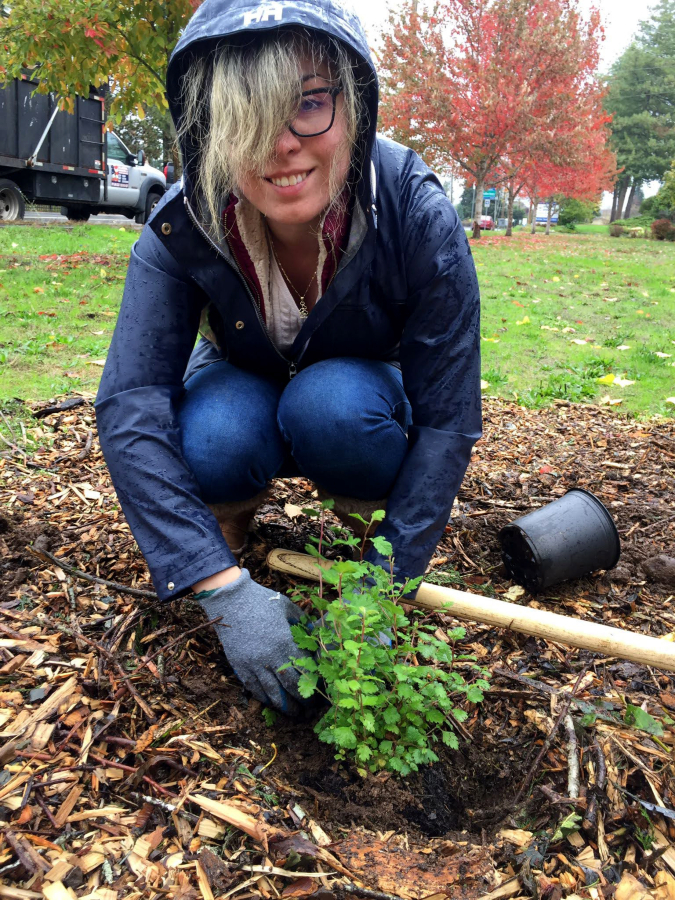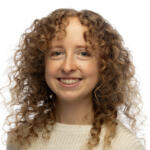Early last November, Rocio Pedrozo celebrated the dead by planting life.
She was joined by others who introduced a mix of hundreds of seedlings and saplings along Burnt Bridge Creek, contributing to the continuity of life – a core element in commemorating the Day of the Dead, a fall holiday widely observed in Mexico.
“Celebremos dia de Muertos Sembrando Vida,” Pedrozo said through a smile.
The observation, hosted by environmental nonprofit Watershed Alliance of Southwest Washington, was significant because of its context but also for the intention behind its organization. Pedrozo, Watershed’s Spanish interpreter who helped realize the planting, wanted to celebrate her Mexican culture with others who could relate.
“I want to contribute something they can relate to and make them want to join (the Watershed Alliance’s) activities,” she said.
Although this took place months ago, it’s one example of the nonprofit’s objective to connect with underrepresented groups in a meaningful way. Specifically, Watershed wants to reach the 11 percent of Clark County residents who are Hispanic.
Sunrise O’Mahoney, Watershed Alliance executive director, nodded to “transcreation” undertaking this goal.
The concept, a type of bicultural outreach, refers to taking a message in one language —in this case, English – and re-creating it in another while preserving its meaning, O’Mahoney said. Its process goes beyond simply translating a message because it requires a consideration of the target audience’s cultural background.
Xaviera Martinez-Ziengenfuss, local chapter president of League of United Latin American Citizens, said this type of engagement extends beyond performative inclusivity. Essentially, it’s a matter of walking one’s talk instead of making symbolic moves for the sake of increasing diversity.
“(Bicultural outreach) just creates this connective cycle of participation in the community in general that really will start to represent more of who actually lives in Vancouver — not just who is willing to speak,” she said.
This means messages need to be tailored to members of local Hispanic communities, most of whom are from Mexico, Central and South America, Martinez-Ziengenfuss said. Organizations shouldn’t rely on translation tools, which are commonly offered in dialects specific to Spain.
Recently, the Watershed Alliance launched Spanish-only volunteer opportunities led by Pedrozo to create a space for those who want to invest their time and energy but aren’t comfortable in mostly English-speaking settings.
Pedrozo said the nonprofit is orienting its messaging in ways that can be culturally meaningful to Latino people and more likely to resonate with them. Something as small as including specific imagery and vibrant colors on fliers or social media posts can go a long way.
“When organizations are trying to do the bilingual approach, they do not address the details,” Pedrozo said. “The details that are special for the Latin community.”
More to be done
Ed Hamilton Rosales, Alliance for Community Engagement member, said it’s evident that people from various racial and ethnic backgrounds care and want to be involved in community issues – they aren’t out to check a box to fulfill diversity goals and push a narrative.
But gaps in local engagement with underrepresented groups remains.
For example, Hector Hinojosa and Monica Zazueta, both alliance members, contended that agencies seldom connect with the spectrum of a community when environmentally impactful developments are in a permitting process. They exemplified this point by nodding to Prologis Park, a proposed warehouse near Fruit Valley, one of Vancouver’s most diverse and low-income neighborhoods.
It aligns with well-documented research illustrating a link between racial health disparities and environmental degradation.
Roben White, a Cheyenne/Lakota alliance member, said “we are using BIPOC people as excuses and as the canary in the coal mine.” Amplifying and listening to diverse voices is vital to right historical and current wrongs inflicted upon underrepresented groups, he said.
“Simply asking our people to provide comments would be a good start,” Hamilton Rosales wrote to The Columbian. “To get our people to support local government we need to see real change that improves our lives.”
Other local nonprofits have implemented individual approaches to amplify diverse voices, including the Alliance for Community Engagement that seeks to keep entities accountable in upholding promises of equity in environmental policy and action. There are also those led by Black, Indigenous and people of color who have promoted environmental justice.
In navigating bicultural outreach, O’Mahoney admitted there have been slight bumps in Watershed Alliance’s application. In its early stages before Pedrozo joined the nonprofit’s team, they advertised a volunteer opportunity in Spanish but didn’t think to do the same for the event waiver or safety speech.
It was a one-dimensional attempt at engaging the Latin community, O’Mahoney said. But she explained that the mistake was indicative of how important bicultural outreach and engagement is.
“We don’t know until we keep trying. It’s brand new,” she said. “To me the third dimension never ends. We’re going to learn from those mistakes and hopefully grow.”




